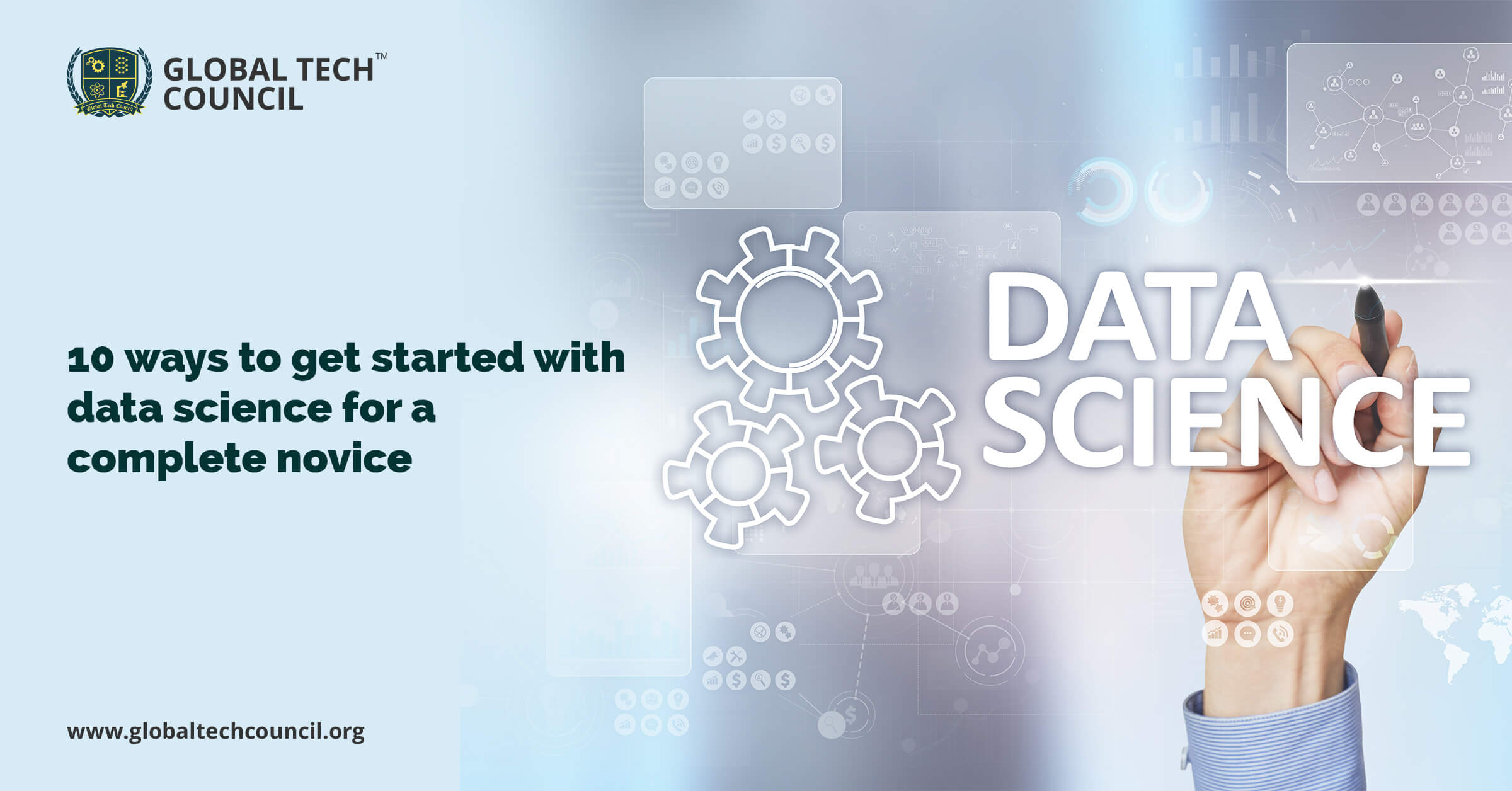
With increasing automation and widespread technology, many new age subjects are also emerging, and data science is one. This career is in high demand, and as the use of technology is increasing, it is safe to assume that it will also stay in order in the future. Experts predict that 11 million jobs will be there in this field by 2026. And according to Glassdoor, the average salary of data science is nearly $116100 per year. So, in this article, we will discuss the top 10 ways that will help one properly start with data science from the beginning. So, let’s get right into it.
Table Of Contents:
- 10 ways to start with Data Science:
- 1. Get a clear concept of job role and subject:
- 2. Learn basic statistics and mathematics:
- 3. Learn essential databases and SQL:
- 4. Learn Python:
- 5. Learn Pandas:
- 6. Learn to work with a data set:
- 7. Learn scikit-learn:
- 8. Learn the basics of machine learning:
- 9. Projects build:
- 10. Competition and open source project:
- Advantage of following the ways:
- Conclusion:
10 ways to Start with Data Science:
Below are the 10 steps which you can follow to get started with a data science career.
1. Get a clear concept of job role and subject:
Before starting, it is essential to understand the subject and job role properly. The main objective of data science is to extract meaningful insights from a massive amount of data, which can be further used by translating them into tangible business value by analysts or business users. Data is the new oil and bread and butter too. So before the start, the data science journey is ready to regularly work with a considerable amount of data. The data scientist’s role in the company is to interpret and manage their vast amount of data and solve complex problems using computer science, modeling, statistics, analytics, math, and good business sense.
2. Learn basic statistics and mathematics:
To work with data, it is essential to know basic mathematics and statistics. Data distribution, working of algorithms, and some basic formulas of math and stat will be needed. It is better to start with high school books, but one can buy books on reading pdf to get a clear picture and basic knowledge.
3. Learn essential databases and SQL:
While working as a data scientist, data won’t be arranged in a table. So it will be the data scientist’s job to organize the data correctly. Beginners typically work with CSV or Excel files to arrange the data, but SQL is a must-have and fundamental skill. Therefore, it is essential to know data storage techniques and the basics of big data concepts.
4. Learn Python:
As of now, python is one of the essential coding languages and is widely used in the data science field. There are many online places to learn python, like learnpython.org, freeCodeCamp, Codewars, Google’s Python Class, etc. One can even do any certified program in python to get certified. Therefore, getting comfortable in the python language is very important to work.
5. Learn Pandas:
Pandas library is a must-known tool to increase the efficiency of work with data. It provides DataFrame, which shows data in a tabular manner. In addition, this library includes a large number of functionality and various techniques to accomplish a single task.
6. Learn to work with a data set:
Learn how to work with a data set correctly. In the data set, one gets a massive amount of data used as a practice set for data science. There are a lot of data sets present on the web. In Kaggle, one can get many data sets for working.
7. Learn scikit-learn:
The scikit-learn library is the next leading thing to learn after pandas. First, get a good and clear concept of its functionality. This is the basics of machine learning. Then, it provides different models to work with.
8. Learn the basics of machine learning:
Once one gets familiar with the scikit-learn library, start learning machine learning from the basics. And try to predict the future result and automatically extract insight of data from a data set using the scikit-learn library. Then, use a different data set to get insight into it.
9. Projects build:
Do some projects. Practical application can give the best understanding. Doing successful projects gives confidence, better performance, and a strong resume as well.
10. Competition and open source project:
Take participation in various competitions. Kaggle competitions are well known in this field. Contributing to an open-source project can be the best way to get better. Contribute to GitHub. There is also an email newsletter like Data science Weekly, Python Weekly to contribute.
Advantage of following the ways:
- Following the ways can properly guide one from data science beginner to expert.
- Following the ways can help one to improve the work.
- Nowadays, data scientists are in high demand. Therefore, following these ways may help one to get a good job.
- Without enrolling in any online or offline course, one still can do better than others by following these ways and working correctly on projects and competitions.
Conclusion:
The way the world is changing and automation take place everywhere, the work is shifting towards data. So data scientist is a futuristic job, and the opportunity is widening day by day. Learning and practicing is the best way to get better. Data science careers are in high demand and offer high-paying jobs. Following these steps can help you land a good job, but you need proper guidance to be successful in this field. And the best way to achieve that will be by attending a complete data science course from a reputed institution like Global Tech Council. They not only provide easy to learn data science courses.